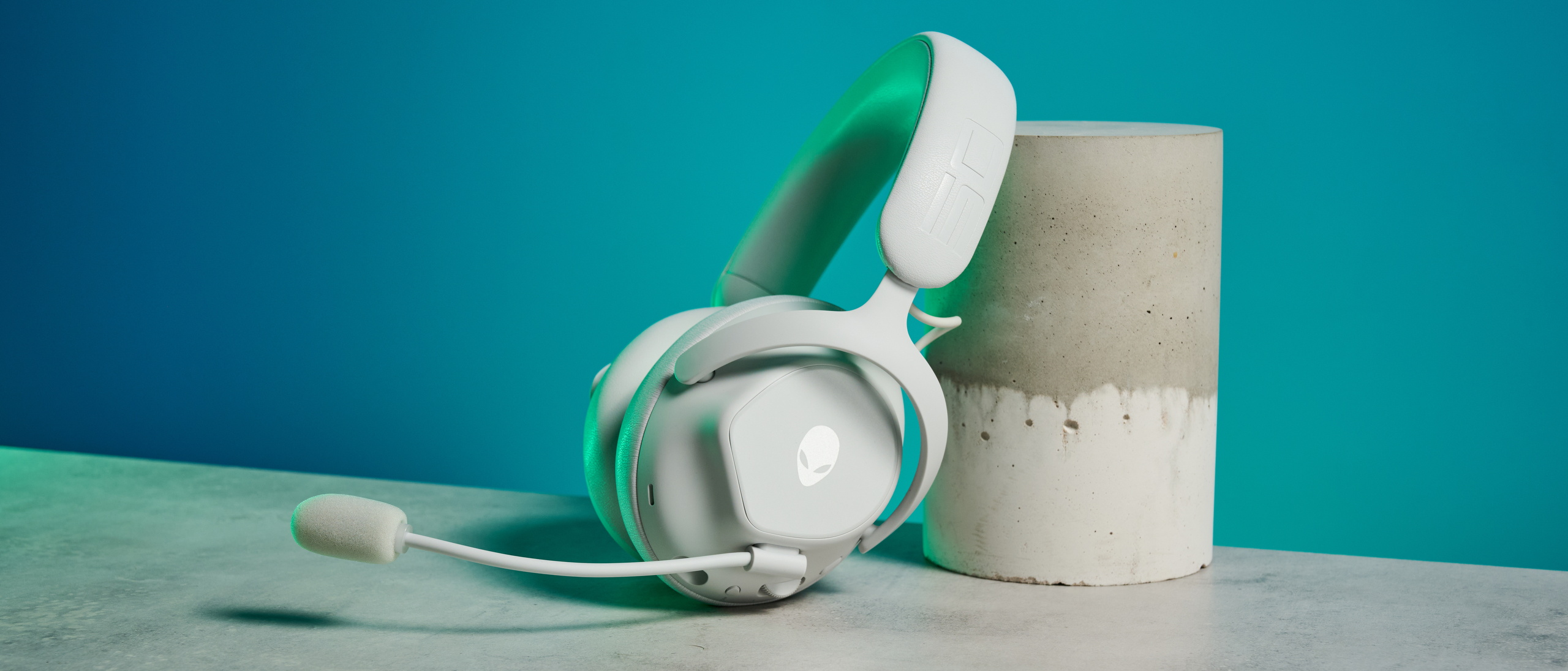Tom's Guide Verdict
Motorola's latest midrange offering doubles down on performance and packs a killer display, but so-so battery life and an awkward design hold this phone back.
Pros
- +
Beautiful display
- +
Great performance for the price
- +
Pure Android software
- +
Works on all carriers
Cons
- -
Shorter battery life than Moto G6
- -
No NFC
- -
Underwhelming design
Why you can trust Tom's Guide
Sticker shock typically comes with the most expensive handsets, from $1,000 iPhones to futuristic, foldable marvels of technology that cost twice as much. But these days, even budget phones are getting pricier, and you needn't look further than the brand-new Moto G7 for proof.
At $299, Motorola's latest smartphone for the masses costs $50 more than last year's Moto G6 did at launch, $70 more than 2017's Moto G5 and $100 more than the Moto G4. That's alarming at first glance, but only until you recognize the lengths to which Motorola goes to justify the added expense.
From its surprising performance to its stunning display and premium software, the Moto G7 packs value that's rare to find, even at that higher price. It's not quite the midrange alternative it once was, but the Moto G7 is still one of the best phones you can get for the money.
- See all of our best cheap phone picks.
Moto G7 price and availability
The $299 Moto G7 is the most well-equipped model in a family of three phones that also includes the $249 Moto G7 Power and $199 Moto G7 Play. All three are sold unlocked with support for all carriers, whether CDMA- or GSM-based. There's also a fourth variant — the more powerful G7 Plus — though that phone will skip the North American market.
You won't be able to buy the Moto G7 directly from your carrier — unless your carrier is Google Fi, that is. Like the Moto G6 before it, the G7 will be fully supported by and sold through Google Fi, the company's pay-what-you-use wireless service. But the phone won't be stocked at other networks' stores, so you'd be best-served buying yours direct from Motorola or third-party retailers like Best Buy, B&H and Amazon. Speaking of Amazon, the site is now offering a version of the G7 with Alexa hands-free functionality built in for $50 off.
Moto G7 Specs
| Price | $299 |
| OS | Android 9 Pie |
| Screen Size (Resolution) | 6.2-inch LCD (2270 x 1080) |
| CPU | Qualcomm Snapdragon 632 |
| RAM | 4GB |
| Storage | 64GB |
| microsSD Slot | Yes, up to 512GB |
| Rear Camera | Dual: 12 MP (f/1.8) and 5-MP depth sensor |
| Front Camera | 8 MP |
| Battery Size | 3,000 mAh |
| Battery Life (Hrs:Mins) | 8:50 |
| Water Resistance | No |
| Size | 6.1 x 3 x 0.31 inches |
| Weight | 6.1 ounces |
Design: A larger (and less elegant) G6
Thanks to a display that's half an inch larger than the one inside the Moto G6, the Moto G7 feels like a much bigger phone than the one it's replacing. Motorola has given the G7 a teardrop-style notch to maximize the new phone's screen coverage, but the bezels up top and below are still quite chunky. The result is far from the most elegant budget device I've seen.

In fact, in a lot of ways, the Moto G7 simply looks like a poor man's OnePlus 6T. It's got the same basic shape, but everything's a bit off. The rounded corners of the display don't fully conform to the curvature of the frame, and that bottom bezel — which housed a front-facing fingerprint sensor on the G6 — is still almost as substantial, but now just wastes that space on the Motorola logotype.
Get instant access to breaking news, the hottest reviews, great deals and helpful tips.
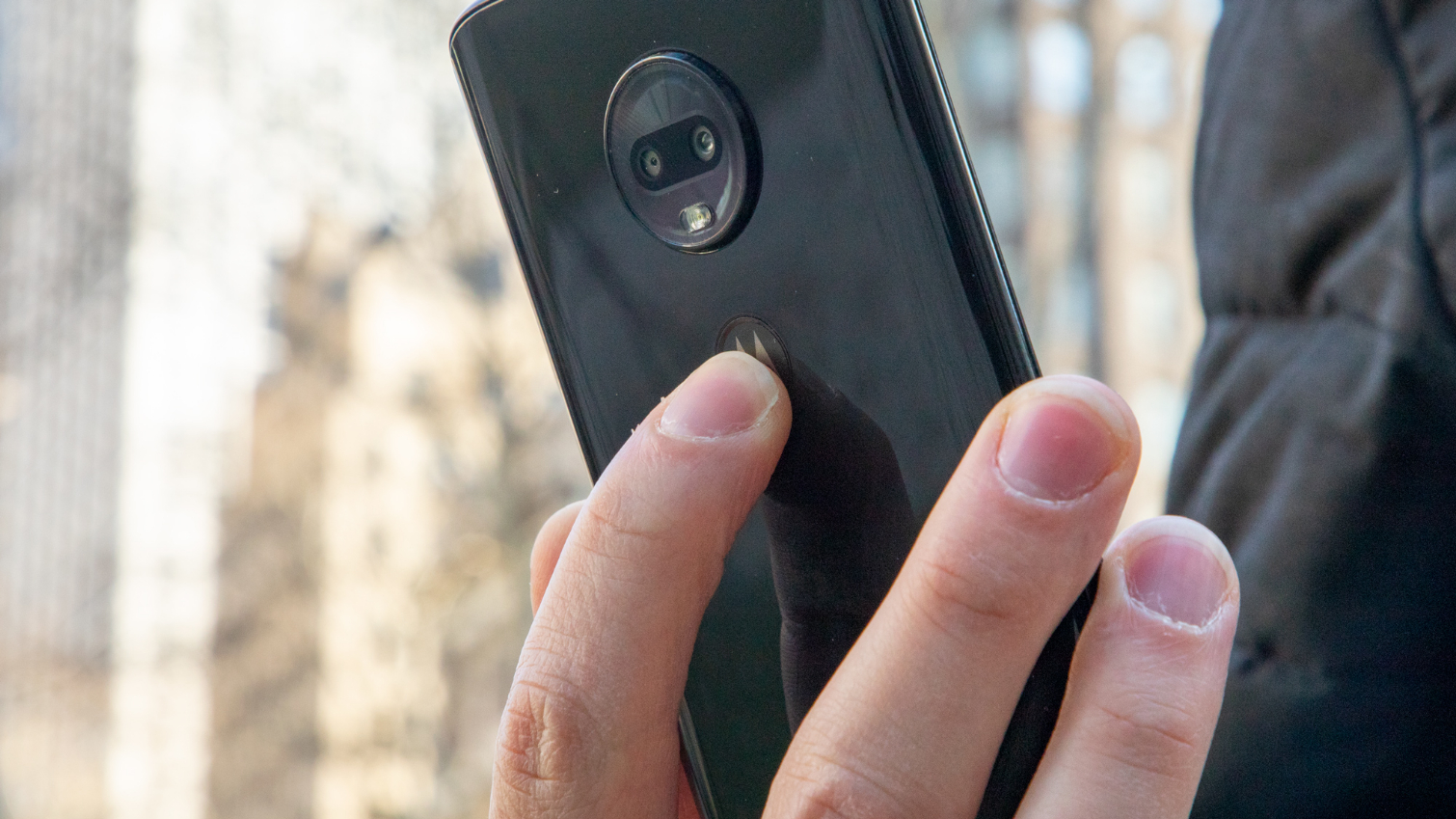
The rest of the G7 is actually quite familiar. Our Ceramic Black unit couples a curved sheet of glass on the back with glossy black polycarbonate edges (make no mistake, though — this is not made of ceramic). And the phone packages its dual cameras in Motorola's trademark circular housing, with a rear-facing fingerprint sensor beneath it.
In a lot of ways, the Moto G7 simply looks like a low-rent OnePlus 6T.
This isn't a very exciting phone to hold or look at — and, in truth, neither was the G6. But at least the outgoing model offered an extremely pocketable size and felt very comfortable in the hand.
MORE: Moto G7 vs. G7 Power vs. G7 Play: Which Phone Should You Buy?
The G7 is still rated water repellent (not water resistant), and although, thankfully, the device retains its headphone jack, Motorola still hasn't added NFC to the mix this year. So, you won't be able to make Google Pay mobile payments with this budget phone.
Display: Bigger and better
On paper, you wouldn't think much of the Moto G7's 6.2-inch LCD display. With a resolution of 2270 x 1080, it's certainly sharp enough, but so are many of the LCD panels in budget phones these days.
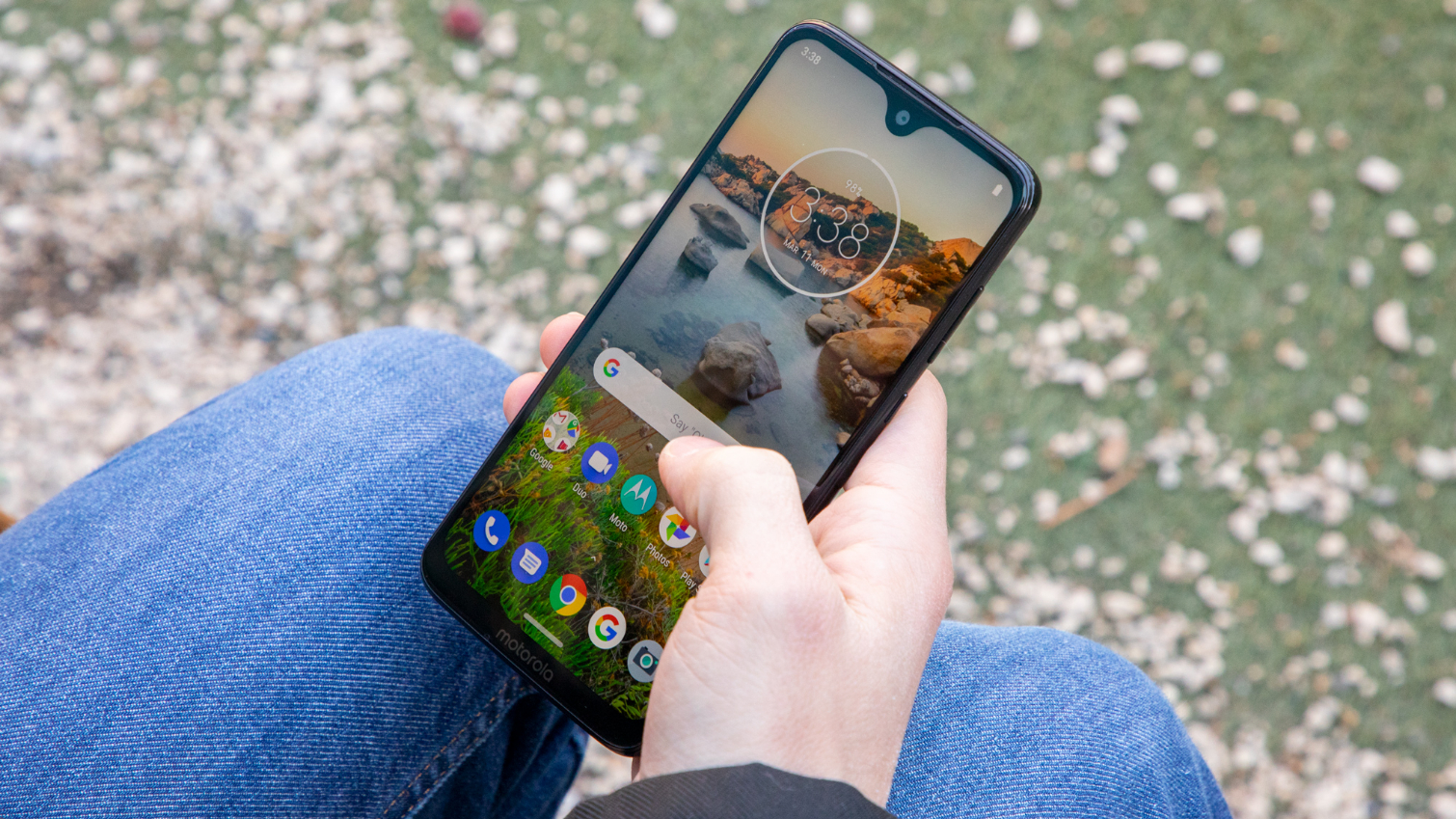
Where the G7's screen really stands out is in its consistency. Last year's G6 also had a sharp, colorful LCD panel, though that display suffered at off-center viewing angles and didn't get particularly bright, either. The G7 delivers a captivating image in all conditions, no matter how you hold the phone.
Watching the Netflix's new documentary series, Formula 1: Drive to Survive, on Motorola's handset, my eyes widened at the picturesque, undulating hills surrounding Austria's Red Bull Ring, the lights of the garage shimmering off driver Daniel Ricciardo's visor, and the rippling sea of green-and-white flags draped over the circuit's grandstands.
The G7 delivers a captivating image in all conditions, no matter how you hold the phone.
My experience was substantiated by the G7's impressive numbers. On our light meter, the device notched a respectable peak brightness of 445 nits. That's higher than the 413 nits of the Moto G6 and within a shout of the 452 nits from the Nokia 7.1, which costs $50 more than the G7.
Robust color is to be expected, and the G7 showed that, with a sRGB-gamut coverage of 135 percent in the phone's Natural color mode. That eclipses the more-muted hues of the Moto G6, which notched 113 percent, but falls short of the punchier Nokia 7.1's 164 percent result.
MORE: The Best Cheap Unlocked Smartphones
On color accuracy, the G7 was practically dead-even with the competition, as well. The Moto phone registered a Delta-E score of 0.34, compared to 0.33 for the HDR10-compliant Nokia 7.1. (Numbers closer to 0 are better.) While the G7 doesn't technically support the industry standard for dynamic range, you'd be hard-pressed to notice any deficiencies; the display really does look that good.
Camera: Gimmicks can't save it
On the back of the Moto G7, you'll find two cameras: one 12-megapixel sensor tied to an f/1.8 lens alongside a secondary 5-MP-depth sensor. An 8-MP shooter is tasked with selfie duty on the front.
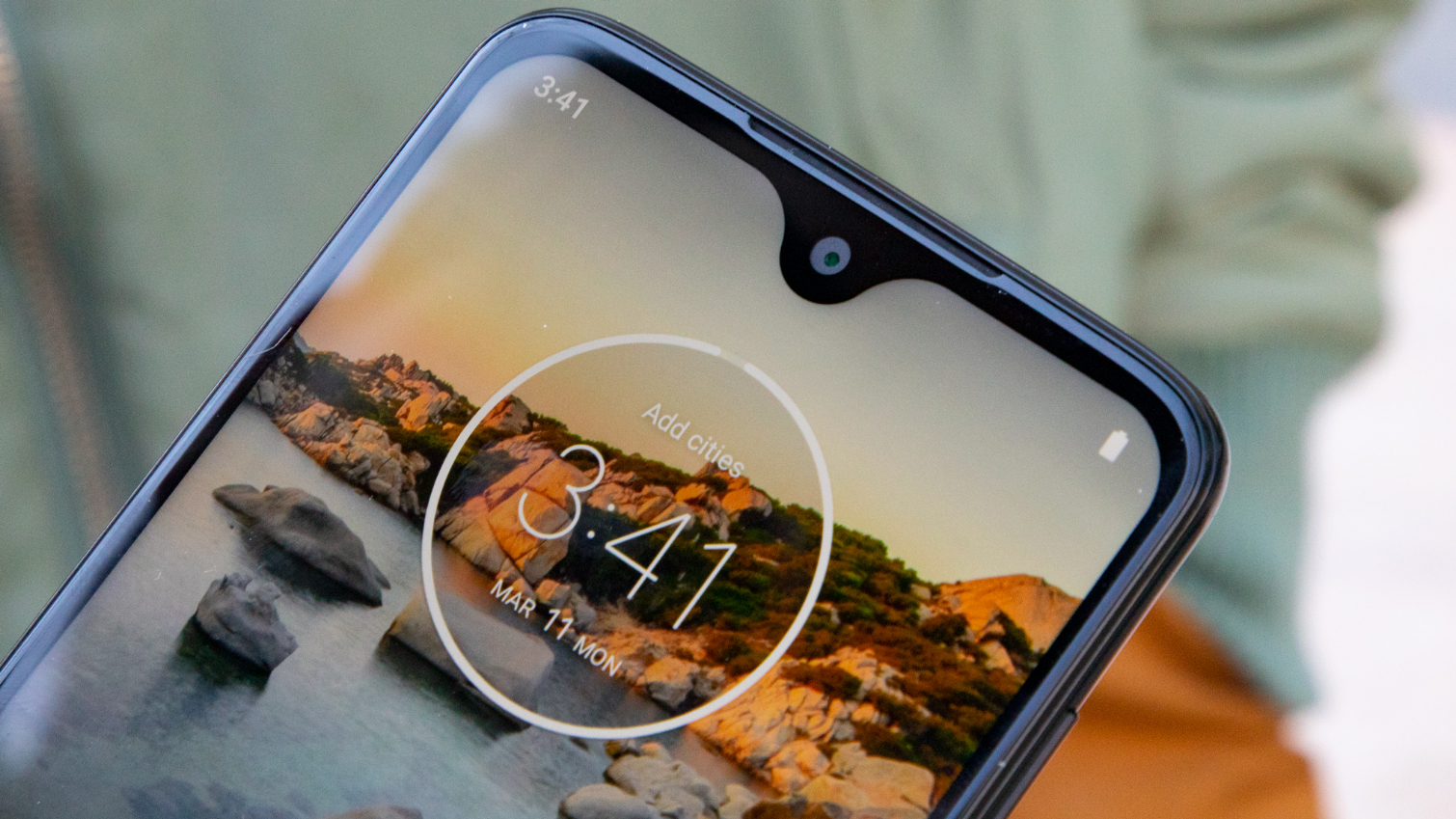
The Moto G7 uses those stereoscopic lenses to produce a range of artistic effects. Aside from the requisite Portrait Mode, there's also Spot Color, which allows you to selectively illuminate specific aspects of the frame in color, and Cinemagraph, which creates GIFs with partial movement.
Those novelties are nice, but they're hardly new to Motorola's handsets. Where it counts, the G7 is merely another serviceable shooter that struggles to stand out from the midrange crowd.
That's not to say this phone camera doesn't have its moments of glory. There were aspects of the G7's attempt at this picturesque, almost-spring Bryant Park scene that I enjoyed when I compared it to the same shot from the OnePlus 6T, a device that costs $250 more. For one, the contrast and sharpness are much more pronounced through Motorola's camera.
Of course, the OnePlus 6T is stronger overall, especially because it doesn't distort the edges of the image like the G7 does. However, that's what you'd expect from a $549 device.

Unfortunately, I don't have quite so much praise for the G7's shallow-depth-of-field portraits, which took on a surreal, painterly quality when I used the feature to snap a photo of my colleague Phillip. The heavy, imprecise bokeh, coupled with the software's inability to detect the boundaries of the foreground really don't do the G7 any favors here.
New for the G7 is Hi-Res Zoom, a feature that, much like Super Res Zoom on the Pixel 3, is designed to preserve the clarity of a shot when you're digitally zooming.
MORE: Moto G7 Hands-on Review: The Best Phone Under $300 Gets Better
As it happens, the OnePlus 6T packs similar technology, and I found Motorola's implementation to fall short by comparison when I closed in on the statue above. The G7's rendition is a little less grainy than the OnePlus' version, which I appreciate, though it's also a whole lot darker. The boosted sharpness from Moto's attempt does make the inscription slightly more legible, but the consequence is a shot that's a little less realistic to my eye.

Indoors, the G7 continued to struggle, producing a hazy, noisy shot that completely fails to rein in the highlights of the light fixtures. The texture of the tile ceiling is totally lost on Motorola'’s device as well.

Often, the G7 tries far too hard to inject vivid color into images when those shades plainly aren't there. The phone's 8-MP, front-facing shooter did something borderline inhuman with my skin tone in this selfie. I look almost like the subject of a Polaroid that's been left out in the sun too long.
If you're in the market for a sub-$300 phone with a better camera, the Galaxy A20 is worth consideration. It's not quite as well-rounded as the G7, but beats it in the camera category.
Performance: Power to the people
No matter which Moto G7 you buy, you get the same Snapdragon 632 processor. In the G7, that chipset is mated to 4GB of RAM and 64GB of storage, generous amounts for a relatively inexpensive device. This also gives us faith that the G7 should last you for a good while before getting bogged down, as old phones do.

Coming after my daily driver, a Pixel 3, the Moto G7 felt surprisingly responsive, and it never left me reaching for Google's flagship out of frustration. App switching and animations happen in a snap, and I didn't feel as though I was testing the phone's limits until I fired up some games.
On Geekbench 4, a benchmark that measures overall system performance, the budget Moto came up strong, with a score of 4,814, compared to the 3,934 achieved by the G6. The G7 also drew awfully close to the Nokia 7.1's 4,934 score, even though that phone is powered by a more capable Snapdragon 636 chipset.
Coming after my Pixel 3, the Moto G7 felt surprisingly responsive, and it never left me reaching for Google's flagship out of frustration.
The G7's 3DMark graphics showing was less encouraging. On the Ice Storm Unlimited test — one designed for midrange and low-end devices — the G7 and its dated Adreno 506 GPU managed 14,724. That's better than any G-Series handset before this one, but the Nokia 7.1 still outperformed Motorola's best efforts here, maxing this test.
Running the more demanding Sling Shot Extreme OpenGL ES 3.1 benchmark, the G7 topped out at a measly 512 points, while the Nokia 7.1 turned in 950. For reference, the most powerful smartphones, like the recently released Galaxy S10, are capable of scores exceeding 5,500.
The Moto G7 is not built for gaming, but then, no budget handset really is. That said, you can get by running some titles at minimal settings. PUBG Mobile and Real Racing 3 run smoothly enough, so long as you turn the graphics down.
MORE: A Guide to No Contract and Prepaid Phone Plans
Some newer and more-demanding titles, like racer Asphalt 9: Legends, are marred with perpetually choppy frame rates that force the games to display at an extremely low resolution just to maintain any semblance of playability. Avid gamers beware: If you're looking for a less expensive route to console-quality mobile titles, the OnePlus 6T remains your best option.
Battery Life: A step back
The Moto G7 may be a lot bigger than the G6, but strangely enough, the new phone's battery isn't much bigger than the old one's. In fact, at 3,000 mAh, this year's midrange Moto has exactly the same battery capacity as last year's model, despite powering a display that's half an inch larger, as well as a beefier processor and more RAM.
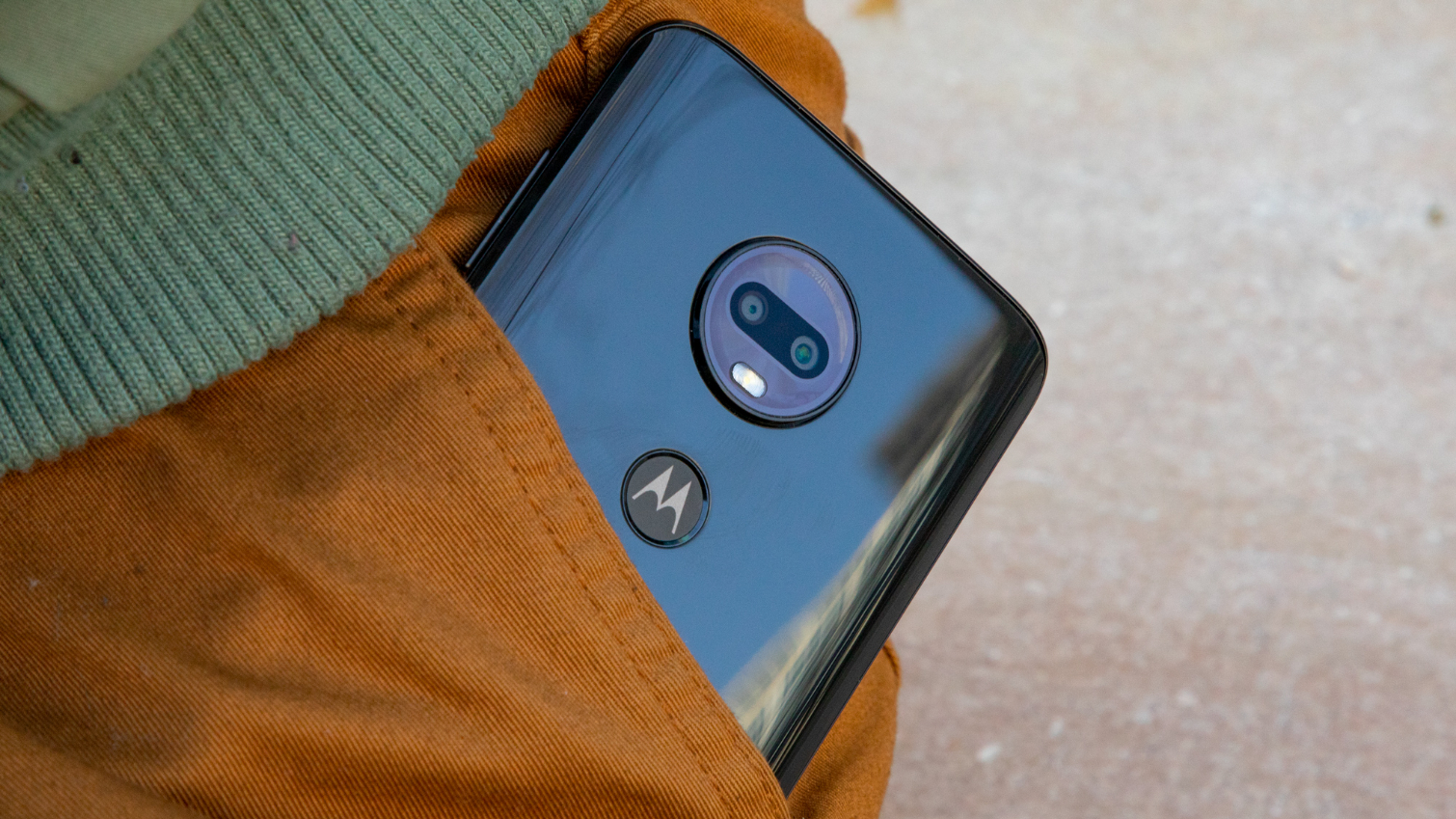
It's hardly surprising, then, that the Moto G7 lasts shorter on a charge than the G6 did. In our battery test, the G7 endured for 8 hours and 50 minutes of endlessly streaming web pages off T-Mobile's LTE network before running out of juice, compared to 9 hours and 35 minutes for the G6. Both phones far exceed the Nokia 7.1's 7:41 result but are put to shame by the $269 Nokia 6.1's marathon endurance of 10:34. Those who are interested in the G7 but are really mindful about battery life should also consider the $249 Moto G7 Power, which comes with a 5,000-mAh battery.
Motorola's packed-in, 15-watt TurboPower charger might pale in comparison with some of the faster wired-charging technologies we've seen lately, like OnePlus' 30-watt Warp Charge spec. However, the TurboPower still has enough juice to provide the G7 with 9 hours of typical usage (by Motorola's estimation, anyway) after being plugged in for just 15 minutes. In our testing, the device went from zero to 26 percent in that time while connected to the stock adapter, and up to 47 percent after 30 minutes.
Software: Simple and clean
If you've used any Motorola phone within the last few years, you'll find that the G7's software experience is largely the same. Mind you, that's not a bad thing by any means.

The G7 runs Android 9 Pie out of the box, and the look and feel of Moto's flavor of Android is functionally stock. You'd be hard-pressed to discern any differences between it and the Android One software on Nokia's handsets. The only differences come in a few bespoke widgets and the Moto app, which unlocks an assortment of shortcuts, gestures and features designed to make your phone easier to use. And in the case of the G7, they actually do so.
Motorola's custom gesture controls are among the best you'll find on Android and a good sight better than Google's own attempts on the Pixel. You can still tap to go home and hold to summon Google Assistant. But the other actions are intuitive, too, like swiping back to go back and swiping right to switch to the last used app. And if you don't like these controls, you don't have to use them; in fact, they're not even activated by default.
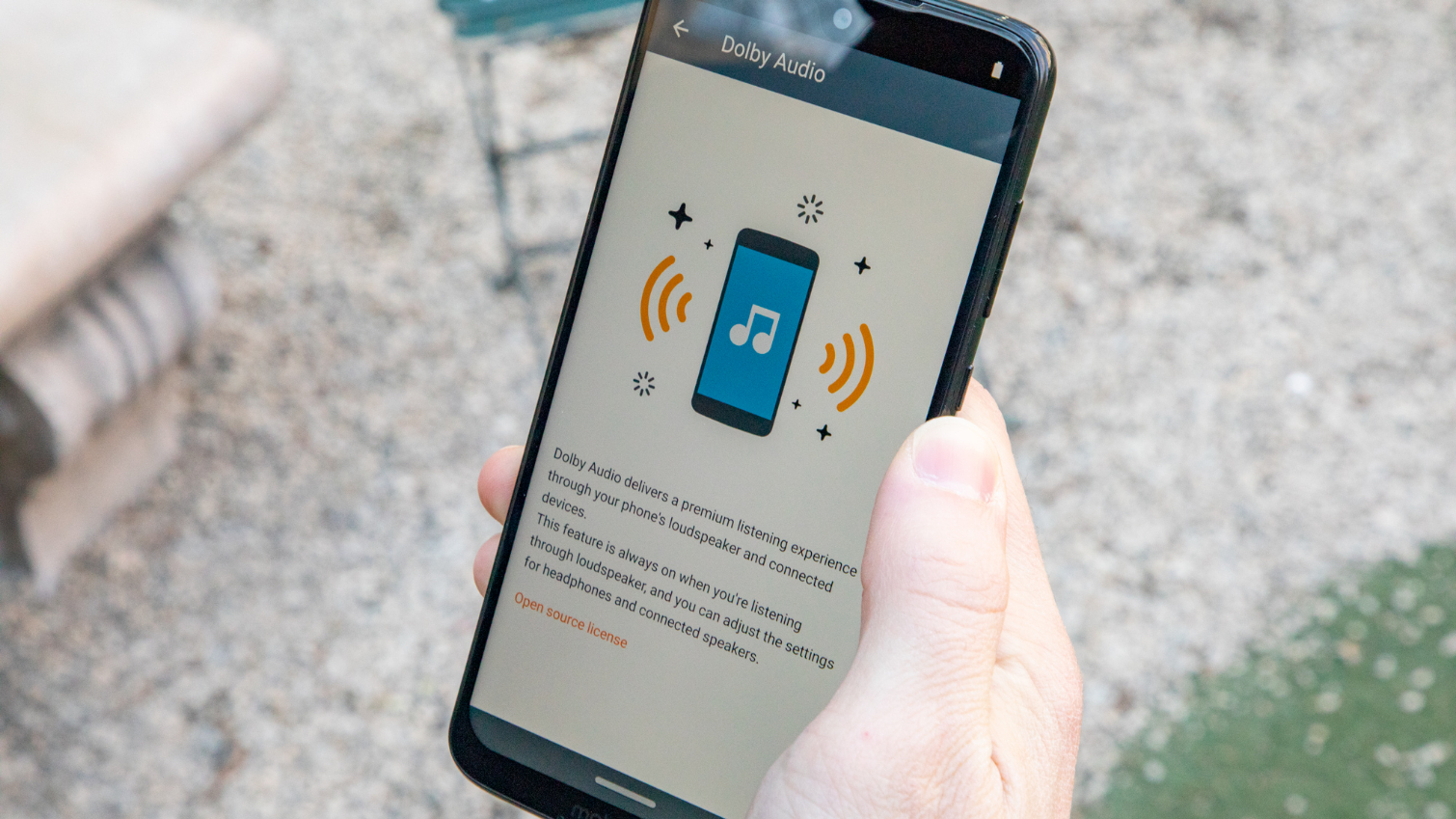
Motorola once again baked Dolby Audio enhancement into the latest G-Series device. However, the software didn't seem to help much, as New Order's bass-driven classic "Thieves Like Us" was rendered tinny and gutless through the G7's lone bottom-firing speaker. Part of this is likely a byproduct of the speaker's placement; the G6 housed its only speaker in the phone's earpiece, which boosted the presence of music and video. In steering away from this design with the G7, Motorola is really taking a step back, and Dolby Audio doesn't make up for it.
Motorola's gesture controls are among the best you'll find on Android.
Moto G7 owners can expect one significant platform update to Android Q either at the end of this year or early in 2020. That's standard for budget devices, though security updates will persist for two years.
Bottom Line
Despite its shortcomings, the Moto G7 remains a good value. Few phones, even at $299, guarantee the level of performance and software polish that Motorola is offering, and the fact that the G7 is compatible with every carrier under the sun in the U.S. is a notable plus, too.
That said, G7's design isn't as elegant as what Nokia's been pumping out lately, and the battery life is shorter on the G7 than on the G6. And for all the camera's creative toys, the photos it captures are really just average.
Budget phones used to be purely pragmatic purchases, the kind you make just because the numbers make sense. The Moto G7 is an excellent handset on paper, and it should last you a good while, too. But today, there are cheap phones you might actually be excited to own, and I'm afraid this isn't one of them.
Credit: Tom's Guide
Adam Ismail is a staff writer at Jalopnik and previously worked on Tom's Guide covering smartphones, car tech and gaming. His love for all things mobile began with the original Motorola Droid; since then he’s owned a variety of Android and iOS-powered handsets, refusing to stay loyal to one platform. His work has also appeared on Digital Trends and GTPlanet. When he’s not fiddling with the latest devices, he’s at an indie pop show, recording a podcast or playing Sega Dreamcast.

